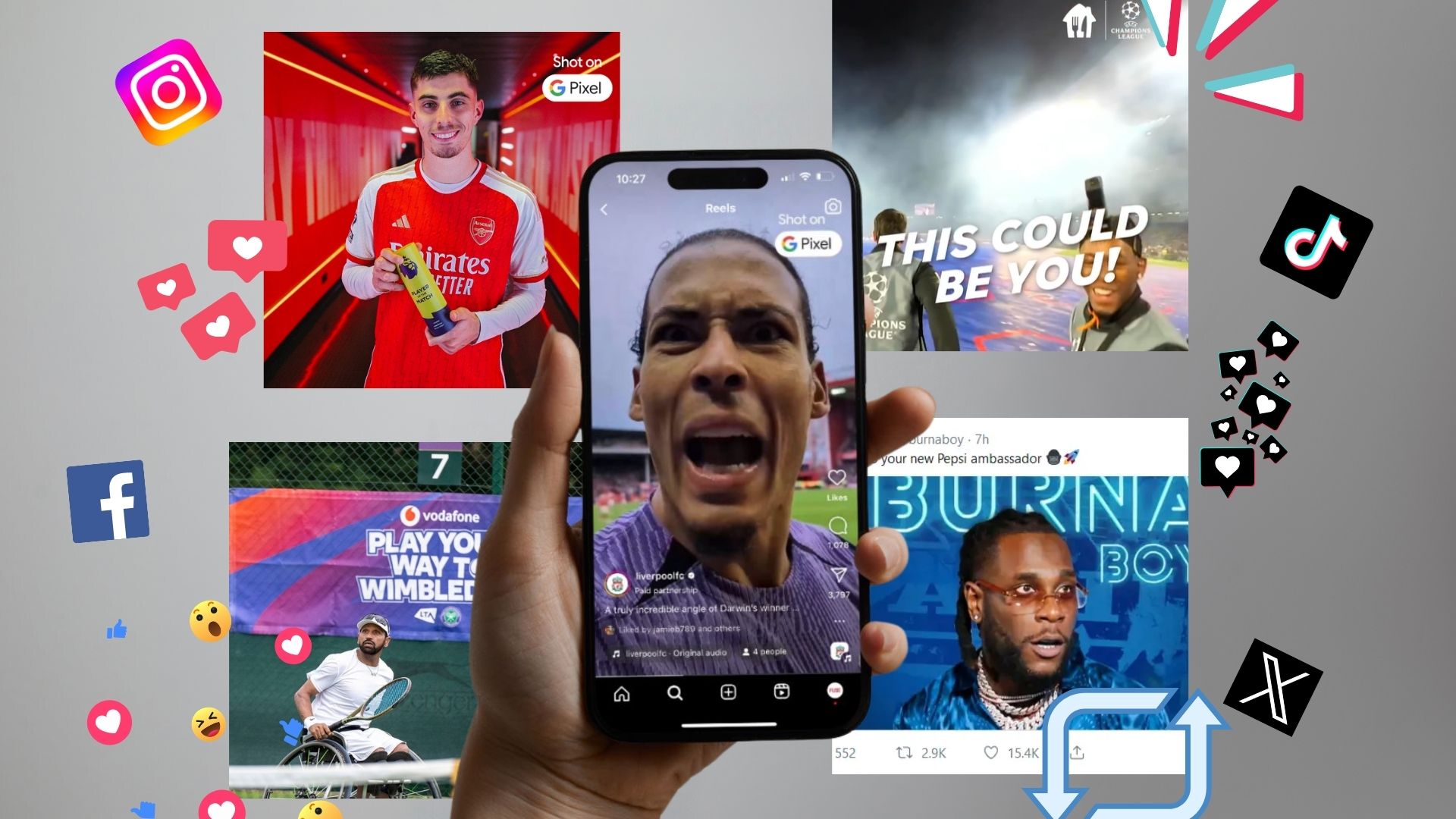
If you have Instagram, it is highly likely that you follow one of the top 50 accounts on the platform, given that they collectively account for over 107.34 billion followers.
Of course, the usual suspects Taylor Swift, Justin Bieber and Kim Kardashian have a strong showing but, after the official Instagram account, the two most followed accounts on the platform are Cristiano Ronaldo and Lionel Messi with 617 million and 496 million followers respectively.
These two aren’t only showing up with the most followers either. The two footballers each have seven of the top twenty most liked Instagram posts of all time, topped by Messi lifting the World Cup in December 2022 with 75.6 million likes.
When we turn our attention to similar metrics on TikTok, however, we see a very different story for sports accounts. While eight of the top 50 most followed accounts on Instagram are athletes or former athletes, Dwayne Johnson is the only athlete or former athlete in the equivalent list for TikTok.
On top of these athletes, another five sports related accounts, including Nike, Real Madrid, and the NBA, are featured in Instagram’s 50 most followed. However, the only sporting brands to keep The Rock company on TikTok’s most followed are the official accounts of Paris Saint Germain (45th) and ESPN (34th).
With the average user estimated to be spending an hour on TikTok every day in 20241, there is massive potential on the platform for brands to make the most of their existing partnerships and sponsorships to simultaneously engage with their current fanbase and reach new audiences.
With rights holders struggling to amass TikTok followers in the same way they do on Instagram, how do brands make better use of their rights as sponsors on one of the fastest growing social media platforms?
While followers may be a vital piece of the puzzle when choosing an athlete or brand to partner with on Instagram, number of followers becomes less important in TikTok’s out-of-network algorithmic feeds. Despite not having a place in the top 50 most followed accounts, Barstool Sports has amassed the fourth most likes of any account on the platform. Similarly, ESPN jumps to the seventh most liked account despite its ranking as 34th most followed.
Moreso than other platforms before it, the rise of TikTok has marked the distinction between in-network feeds (like Facebook and Instagram), where users nominate who they want to see in their feeds, and out-of-network feeds, where users are algorithmically served content based on their behavior.
As such, while the rise of out-of-network feeds appear to have left rights holders with fewer followers and more problems on digital platforms, the reality is that perhaps there is too much focus on the wrong metrics. By looking at likes, comments, and quality engagements instead of followers, new strategies can be developed in a way that leads to exciting and unique ways to activate exclusive rights.
On out-of-network platforms, a creative-first strategy is the best way forward. If a fan can watch the game on TV and a press conference on YouTube, the challenge for a brand is to give users content that they wouldn’t have access to anywhere else.
With more content and more creators than ever before, brands need to use their access to sponsorships and make better use of highlighting the exclusive elements that are written into their rights. Exactly what this means will vary between brands and partnerships.
A recent example of a brand using these exclusive rights to incredible effect was when Liverpool’s Virgil van Dijk took fans into team celebrations following Darwin Nunez’s winner against Nottingham Forest, courtesy of Google Pixel.
As the official mobile phone partner of Liverpool, Google Pixel brings fans closer to the team they love, putting players at the forefront of the content while natively integrating their product. While millions of fans were likely watching the game on TV, the right of Google Pixel to share pitch side footage meant that fans could only gain exclusive access by engaging with the brand. While Liverpool fans are most likely to engage with the content, the unbelievable access to a pivotal moment, posted on out-of-network feeds will also put the Google Pixel brand in front of audiences outside of those immediately connected to the Liverpool sponsorship.
This content doesn’t always have to be focused on access to players, however. Using their Wimbledon sponsorship rights, Vodafone’s partnership with Give Vision gave visually impaired tennis fans enhanced Wimbledon footage suited to their individual vision profile. Sharing this experience on algorithmic feeds opens exposure of Vodafone’s Wimbledon partnership up to people outside of tennis fans and those who are already engaged with Vodafone brand.
While the above activations are very different, they are perfect examples of brands using their rights to integrate their brand into their sponsorships, creating opportunities to connect with new audiences.
In summary, with the rise of out of-network feeds, brands who have access to sponsorships and exclusive IP rights have the potential to make a greater impact than ever. Creative-first strategies that offer exclusive content put brands in a position to appeal to the current follower base and simultaneously build familiarity and affinity by engaging with new audiences.